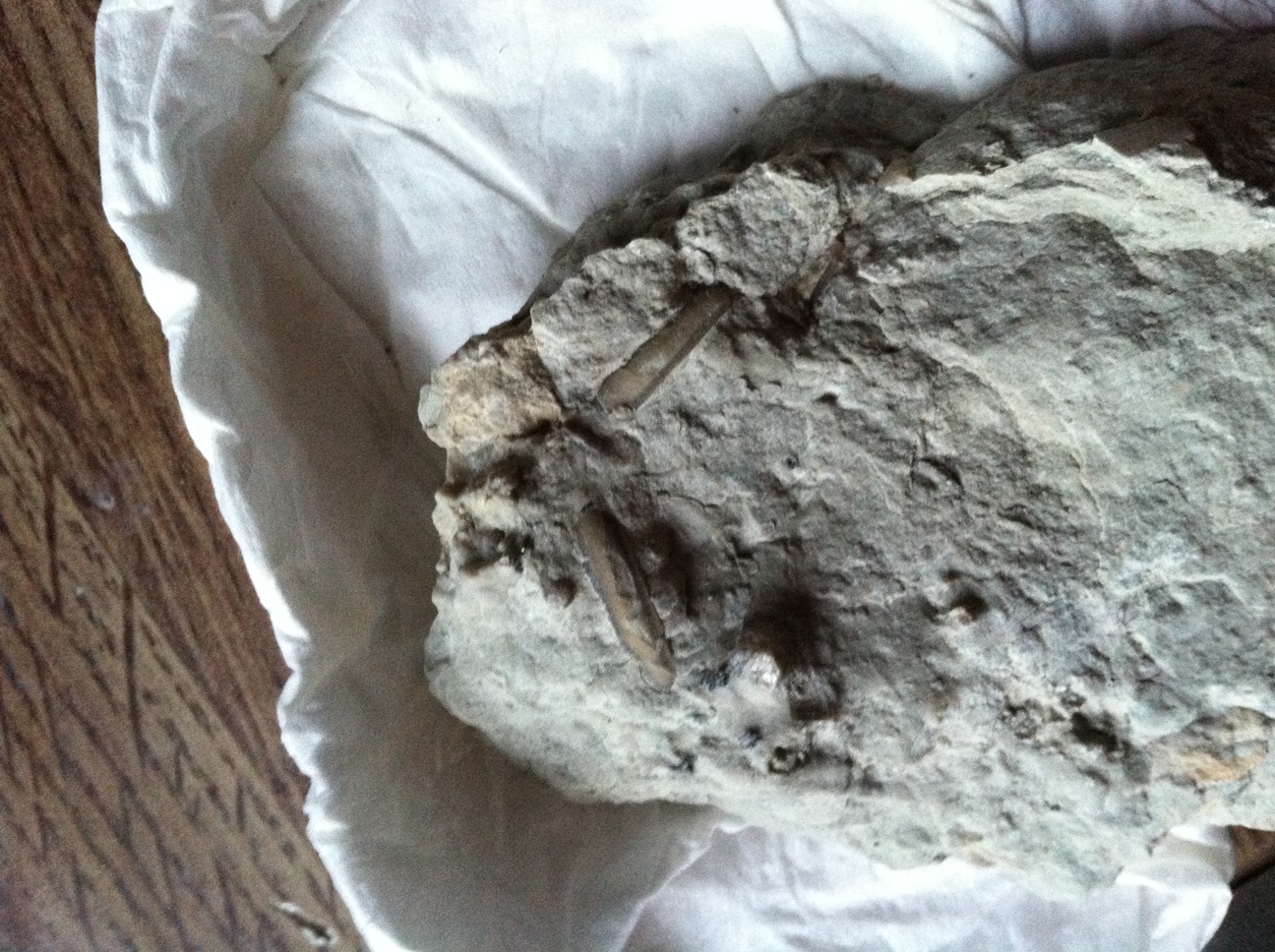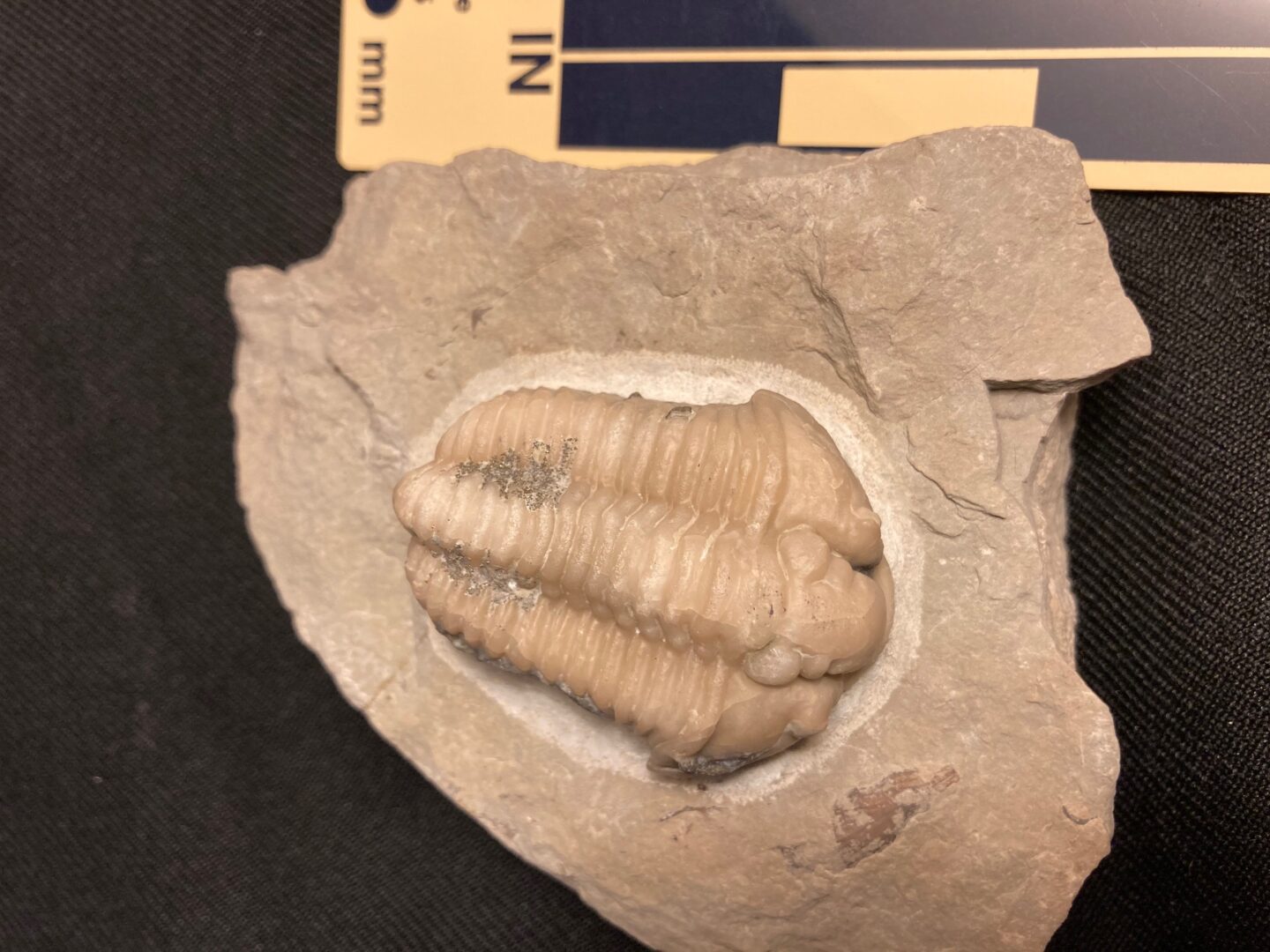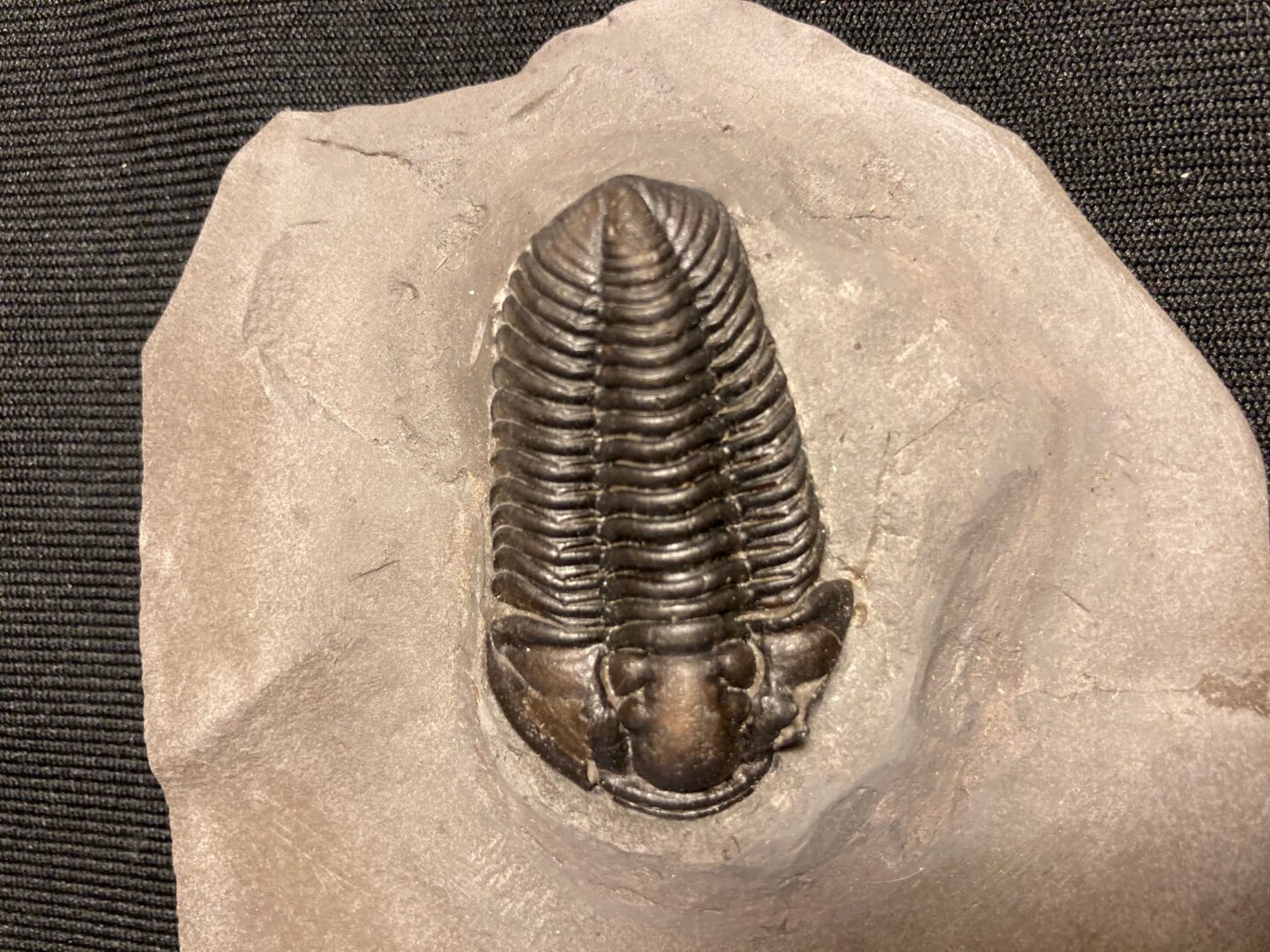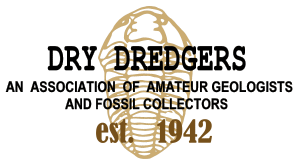I have previously written about the rare trilobite Spathacalymene on this blog site. It is found in the Silurian Massie (formerly Osgood) Shale of Southeast Indiana. Yet an even rarer trilobite from that formation is Calymene. I’ll describe one of them here.
In my experience, most of the trilobites found in the Massie are ventrally exposed. But the specimen shown in Figures 1 and 2 was both ventrally and dorsally exposed on a thin slab.


With the anterior portion/margin covered in hard matrix, I assumed the trilobite was Spathacalymene, with the “snout” still buried in the rock. I even showed these same pictures of this unprepped bug in a November 2016 Dry Dredgers blog, which included my “obvious” conclusion that the bug would turn out to be a Spath.
But the specimen sat unprepped in my pile of rocks for some time. Eventually I turned it over to Ben Cooper for prep. And, of course, I anticipated receiving back a prepared Spathacalymene. Instead, though, I was surprised with a Calymene! See Figure 3.

Since complete articulated 3D specimens of this genus in the Massie are extremely rare, I was thrilled with this outcome. In my decades of collecting the Massie, I’ve found only 6 complete specimens of Calymene. Since there appears to be no published work on these trilobites, I have no confirmed species name to apply to them. So they reside in my collection as Calymene sp.
One suggestion for ID that has been offered is that the trilobite might be Calymene niagarensis (Hall, 1843), the same species that occurs in the similarly aged Silurian Rochester Shale of New York (Figure 4).

While the specimens in Figures 3 and 4 may indeed be the same species, I offer that 5 of the 6 Massie Shale Calymene specimens I’ve obtained are between 2.2 inches and 2.8 inches long. Those lengths would likely be quite large for the species. If they are C. niagarensis, perhaps they were well fed in the Silurian of Indiana.
Does anyone out there have a more definitive classification for the Massie Shale Calymene?
Don Bissett

A long-time member of the Dry Dredgers, I’ve been collecting fossils ever since moving to Cincinnati in 1975 to work at P&G. I was introduced to fossil collecting by Bruce Gibson, another Dry Dredger and co-worker at P&G. Shortly after that, I met Dredger Dan Cooper. Both of them taught me a lot about the hobby. Ever since, I’ve been hooked on fossils.
My primary focus is collecting trilobites and echinoderms, though I often find myself accumulating a much wider assortment of fossils. Beyond the collecting hobby, I’ve also had the opportunity to work with professional paleontologists – extremely rewarding experiences. Some of those have been described in Dry Dredger Bulletin articles, MAPS (Mid-American Paleontology Society) articles, and technical publications. I plan to share more about collecting and professional interactions in my blog posts.Latest posts by Don Bissett (see all)
- Massie Shale Calymene - January 4, 2021
- Mississippian starfish - November 13, 2020
- Walcott-Rust Starfish - October 25, 2020
- Spathacalymene - September 20, 2020
- Penn Dixie Dig with the Experts 2018 - May 27, 2018




